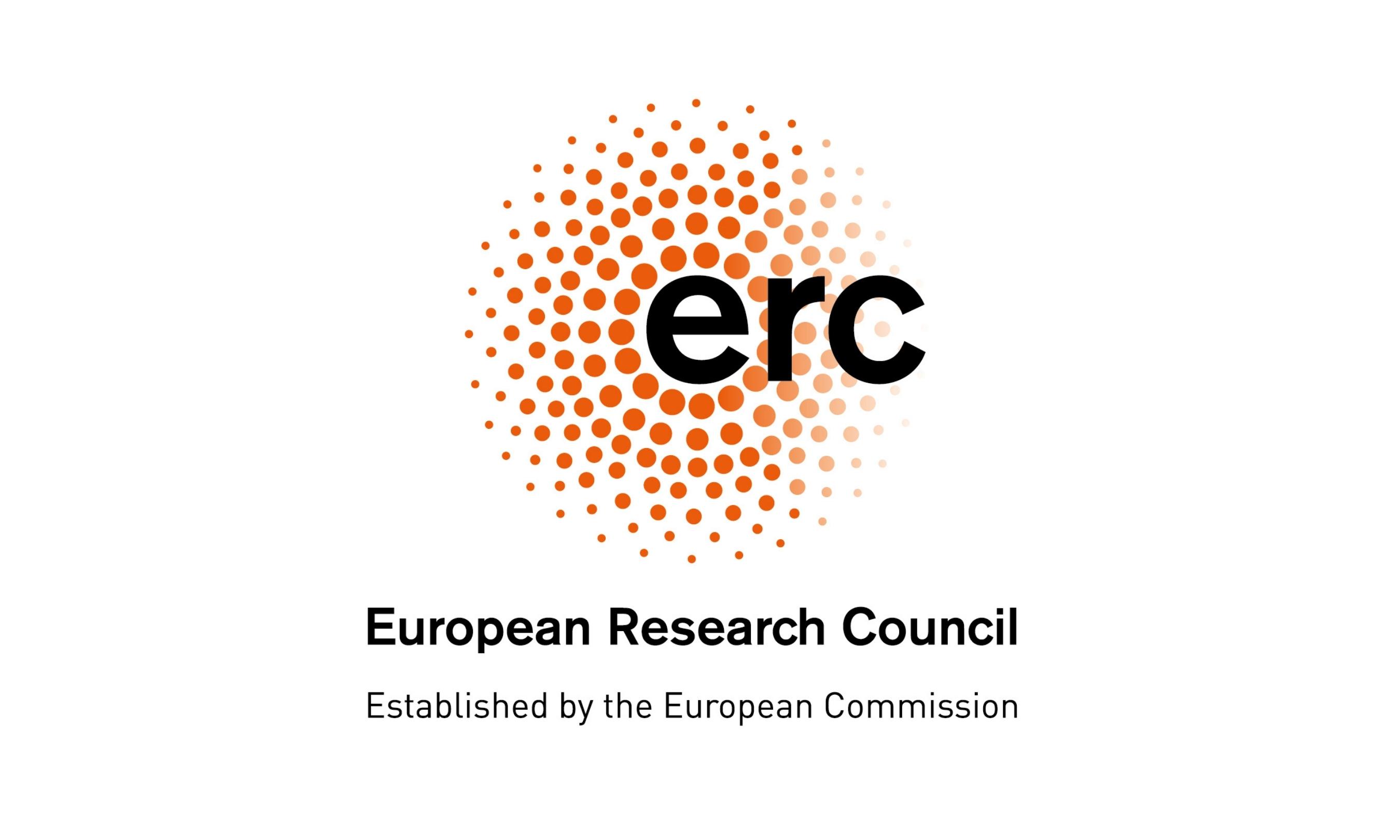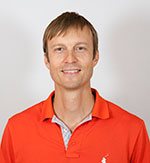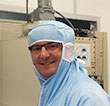
Identifying targets for chronic lung disease drugs
Asthma is the most common chronic disease in children, and the World Health Organisation says that over 300 million people are affected globally. Continuation of childhood asthma into adulthood is associated with lung function impairment and an increased risk of COPD, chronic obstructive pulmonary disease.
At the Karolinska Institute in Stockholm, Associate Professor Erik Melén will study the time point during childhood when persistent asthma and pre-stage COPD initiated. His novel approach includes deep phenotyping of patients, identifying disease-related biomarkers, and detailed cell characterization amongst other methods. The goal of the project is to identify targets for new asthma and COPD drugs as well as to advance knowledge for targeted preventative therapies in children at risk of adult chronic lung disease.
Project: Biomarkers for Asthma and Lung function impairment (TRIBAL)
Researcher: Erik Melén

Host institution: Karolinska Institute, Sweden
ERC funding: €1.5 million for five years
Using big data to react to civil emergencies
One of the means of responding to civil emergencies such as flooding, earthquakes, terrorist attacks, fire, train or air crashes, etc., is to simulate the behaviour of humans during disasters using mathematical models. However, current techniques are not designed to consider up-to-date information on urban movements, and are usually based on historical data from censuses and surveys.
Dr Nicolas Malleson, from the University of Leeds, will address this shortcoming by integrating data assimilation methods, used in weather forecasting, and apply them to models of cities. He will develop a cutting-edge simulation of a city that will include real-time big data streamed from, for instance, social media, mobile phone use, and public transport records. This new technique could be used to develop more accurate forecasts of and responses to potential emergency situations, as well as more efficient urban management and planning.
Project: Data Assimilation for Agent-Based Models: Applications to Civil Emergencies (DUST)
Researcher: Nicolas Malleson

Host Institution: University of Leeds, United Kingdom
ERC funding: €1.4 million for five years

Diamonds could become the brain's best friends
At a time when dysfunctions of the Central Nervous System affect an ever growing share of the global population, a major challenge is advancing our understanding of brain functions, like the EU co-funded Human Brain Project strives to do. Thanks to microelectrodes implants, it is currently possible to restore neurological functions in disabled patients, such as visual perception or induced movements in prosthetic limbs. However, these implants' performance and lifetime are compromised because of their rigidity, which does not adapt to the brain's surface, and degradation due to liquids penetrating their surface.
Prof Lionel Rousseau, based at ESIEE Paris School of the Chamber of Commerce and Industry, intends to address these weaknesses by resorting to new synthetic diamond materials: these are biocompatible and resistant to corrosion, and would allow for thinner and more resistant implants. Such high-performance devices could become a new tool to better understand brain functions and develop new rehabilitation strategies for patients of brain diseases.
Project: High density full diamond cortical implant for long life time implantation (NEURODIAM)
Researcher: Lionel Rousseau

Host institution: ESIEE Paris School of Chamber of Commerce and Industry, Paris-Ile-de-France region, University Paris-Est, France
ERC funding: €1.4 million for five years

Effects of dissimilar views in media
In many countries, hostility, distrust, and intolerance are on the rise. In this context, policymakers promote exposure to different views in the media, hoping that encountering dissimilar arguments and perspectives can foster understanding and respect for those who hold different opinions. However, it can also backfire and do harm, resulting in increased conflict.
Dr Magdalena Wojcieszak, from University of Amsterdam, will research a fundamental question: Under which conditions exactly does exposure to dissimilar views in the media amplify or attenuate hostilities among citizens with different opinions? Her research will account for old and new media, various political issues, and different kinds of exposure. The findings are expected to be crucial for interdisciplinary academic research, policymakers, and media designers.
Project: Europeans exposed to dissimilar views in the media: investigating backfire effects (EXPO)
Researcher: Magdalena Wojcieszak

Host institution: Amsterdam University, Netherlands
ERC funding: €1.4 million for five years

© iStock
Awakening sleeping beasts to eradicate chronic infections
Chronic and relapsing infections have made an alarming progression over the last decades, and antibiotic-resistant strains are bound to proliferate even more in the upcoming years, posing serious health threats. At the University of Milan, Dr Sara Sattin will use a creative approach to fight antibacterial resistance, focusing on bacterial persisters. These are dormant bacterial cells that play a key role in chronic infections: although they are not genetically resistant to antibiotics, bacterial persisters have the ability to shut down through a process called 'stringent response', becoming insensitive to current drugs. This feature is typically triggered during exposure to stressful conditions, such as antibiotic treatment, and turns bacterial persisters into a reservoir that allows pathogens to re-emerge and proliferate at the end of the therapy.
Dr Sattin wants to find molecules that are able to inhibit the 'stringent response', in order to wake up the dormant persisters. Once awake, these are expected to become drug-sensitive again, and the infection could be fully eradicated through antibacterial treatment.
Project: Eradicating Chronic Infections (ERACHRON)
Researcher: Sara Sattin

Host institution: University of Milan, Italy
ERC funding: €1.5 million for five years

Socio-economic consequences of temporary work
More and more people earn money via temporary employment these days, with it becoming widespread across the world. With this in mind, Professor Michael Gebel from University of Bamberg aims to provide a novel understanding of the socio-economic consequences of temporary work. In his research, he will compare temporary work both to the alternatives of permanent work and unemployment.
With previous studies having mainly focused on individual workers, Professor Gebel will investigate panel data that follow temporary workers and their household living arrangements over time in a life course perspective. He will analyse Western and Eastern European countries, as well as Canada, United States, South Korea, Japan and Australia to gain innovative insights.
Project: The socio-economic consequences of temporary employment: A comparative panel data analysis (SECCOPA)
Researcher: Michael Gebel

Host institution: University of Bamberg, Germany
ERC funding: €1.4 million for five years

Miniaturised sensor technology for gas detection
Methane is one of main greenhouse gases and a potent climate forcer. Even if rising, methane concentration in the Earth's atmosphere is very low, it occurs at about 1.8 parts per million, which makes its monitoring difficult and costly. Prof Jana Jágerská, from UiT The Arctic University of Norway in Tromsø, aims to develop a new concept for on-chip sensing of methane that allows increased sensitivity of gas detection. This would allow radical miniaturisation of devices and cost-cutting. New sensors could be organized in networks to monitor methane emissions over large areas, from both natural sources and oil and gas industry. They could be placed on aircraft, marine vessel or cars to directly measure methane concentrations at different locations and altitudes around the globe. This would provide denser and more accurate methane concentration maps as input data for atmospheric modelling and climate research. The results of this research could also be used in the detection of other gases, e.g. CO2 and different volatile organic compounds, with equally relevant applications in the medical domain.
Project: Cryptophane-Enhanced Trace Gas Spectroscopy for On-Chip Methane Detection (sCENT)
Researcher: Jana Jágerská

Host institution: UiT The Arctic University of Norway
ERC funding: €1.5 million for five years

Correct networks: Making our digital society safer
Computer networks are the backbone of our society, but configuring them is error-prone, tedious and expensive. Misconfigured networks result in headline-grabbing outages affecting countless users and result in millions in lost revenue, while security breaches endanger our safety. This is because there are currently no guarantees that networks correctly implement their operator’s policy.
Dr Costin Raiciu plans to tackle this problem by proposing a new, integrated approach combining low-level security concerns and network-wide policy compliance checking. His team at Politehnica University of Bucharest, Romania, will develop novel theoretical frameworks and design algorithms. The results of this research promise to enable network operators to automatically build provably correct networks, significantly minimising the risks and damage.
Project: Provably Correct Networks (CORNET)
Researcher: Costin Raiciu

Host institution: Politehnica University of Bucharest, Romania
ERC funding: €1.3 million for five years






